Smart Web Design Tips That Draw in More Customers
In today’s digital marketplace, your website is often the first impression your business makes. With online competition growing fast, your design choices matter more than ever. Smart web design can be the difference between gaining a loyal customer or losing a lead in seconds. That’s why it's essential to use proven web design ideas to attract customers and convert visitors into buyers.
This guide explores practical, effective, and modern tips that help small businesses, startups, and growing brands transform their websites into customer magnets.
Why Website Design Matters for Business Growth
Your website isn’t just an online brochure — it’s your 24/7 salesperson. Research shows that users form an opinion about your website in just 50 milliseconds. If the design looks outdated, cluttered, or hard to navigate, users are likely to bounce. That means missed revenue.
With proper web design, however, you build trust, improve engagement, and guide your visitors smoothly through the buyer’s journey.
Whether you’re redesigning your site or starting from scratch, the following tips will help you implement web design ideas to attract customers organically and effectively.
1. Keep It Clean and Simple
When users land on your site, they should immediately understand what your business does. A cluttered interface overwhelms users and confuses their next step. A clean layout with plenty of white space, clear headings, and concise text improves readability.
Avoid using too many fonts, loud colors, or flashy elements that distract from your message. Simplicity doesn’t mean boring — it means focused.
🟢 Pro Tip: Use a consistent font family, a limited color palette, and visual hierarchy to guide user attention.
2. Make Navigation Effortless
One of the most overlooked web design ideas to attract customers is optimizing your navigation. If users can’t find what they’re looking for within 2–3 clicks, they’ll likely leave your site.
Your main navigation bar should have logical categories, such as “Home,” “About,” “Services,” “Blog,” and “Contact.” For e-commerce sites, use filters, search bars, and categories to simplify product discovery.
🟢 Pro Tip: Add sticky headers, breadcrumbs, and clickable CTAs to help users easily move around your site.
3. Mobile-First Design is Non-Negotiable
Over 60% of website traffic now comes from mobile devices. If your website isn't responsive, you're losing out on valuable traffic. Mobile-first design ensures that your site looks great and functions perfectly on smartphones and tablets.
Buttons should be thumb-friendly, text should be easy to read without zooming, and images must load quickly. This isn’t just good for users — it's vital for SEO as Google prioritizes mobile-optimized websites.
🟢 Pro Tip: Use tools like Google Mobile-Friendly Test to check your site’s responsiveness and fix issues quickly.
4. Use Visuals to Tell Your Story
Humans process visuals 60,000 times faster than text. Integrating high-quality visuals into your website can dramatically increase engagement. This includes product photos, explainer videos, infographics, and testimonials.
Visual storytelling is one of the most effective web design ideas to attract customers because it creates emotional connections. When users can “see” your value, they are more likely to trust you and take action.
🟢 Pro Tip: Use original images where possible. Stock photos can feel generic and impersonal.
5. Boost Speed and Performance
No matter how good your design is, if your website is slow, visitors will leave. A delay of just one second in page load time can reduce conversions by 7%. Optimize images, use lazy loading, leverage caching, and choose a reliable hosting provider.
Remember, website speed isn’t just about user experience — it directly affects your search engine ranking too.
🟢 Pro Tip: Use tools like GTmetrix, Pingdom, or Google PageSpeed Insights to monitor and improve your site’s speed.
6. Use Clear and Compelling CTAs
Call-to-Action buttons (CTAs) are your website’s signposts. Whether you want users to “Buy Now,” “Sign Up,” or “Schedule a Demo,” your CTAs must be visible, action-oriented, and benefit-driven.
Good CTAs use strong verbs, contrast colors, and are strategically placed — especially above the fold and at the end of sections.
This strategy remains one of the most high-converting web design ideas to attract customers because it encourages user interaction and improves your lead funnel.
🟢 Pro Tip: A/B test different CTA placements, colors, and wording to see what converts best.
7. Add Social Proof
When people see that others trust you, they’re more likely to trust you too. Social proof elements such as customer testimonials, reviews, case studies, and logos of brands you've worked with add credibility.
Highlighting reviews near CTAs can boost conversions significantly. This subtle trust-building design is one of the underrated yet powerful web design ideas to attract customers today.
🟢 Pro Tip: Use rotating testimonial sliders or a dedicated reviews page with visuals for added authenticity.
8. Optimize for SEO from the Start
A great-looking website is useless if it doesn't show up on search engines. Your design choices should complement your SEO efforts. That includes fast loading, mobile responsiveness, clean URL structure, proper heading hierarchy (H1, H2, etc.), and schema markup.
Also, ensure that your site is easily crawlable with an XML sitemap, internal linking, and readable text.
🟢 Pro Tip: Use alt tags for all images to boost image SEO and accessibility at once.
9. Focus on Accessibility
An accessible website ensures that users with disabilities can interact with your content. This includes using readable fonts, high color contrast, keyboard navigation, and screen reader compatibility.
Google rewards accessible sites, and more importantly, it reflects your brand's inclusivity and professionalism.
🟢 Pro Tip: Follow WCAG (Web Content Accessibility Guidelines) and use accessibility checker plugins for support.
10. Keep Testing and Improving
Smart design is never static. You must test, analyze, and improve your site continuously. Use tools like Google Analytics, Hotjar, or Clarity to understand user behavior — where they click, where they scroll, and where they drop off.
Based on this data, make incremental changes to optimize conversion paths, improve UX, and fine-tune your web design ideas to attract customers over time.
🟢 Pro Tip: Set up heatmaps and session recordings to visually identify friction points in your design.
Final Thought: Design for the User, Not Just for You
The most successful websites today are not those with the fanciest animations or the most features — they’re the ones that understand their users. Every design choice should be intentional, focused on user experience, trust-building, and conversion.
When you implement proven web design ideas to attract customers, you’re not just building a beautiful site. You’re creating a seamless digital experience that brings people closer to your brand.
FAQ: Smart Web Design for Customer Engagement
Q1: What is the most important element of web design for attracting customers?
A clean layout with intuitive navigation and clear CTAs is key. These guide visitors without friction, helping them take action.
Q2: How does mobile optimization affect customer engagement?
Most users browse on mobile. A responsive site ensures fast, seamless experiences, reducing bounce rates and increasing conversions.
Q3: Should I prioritize speed over design?
Yes. A fast, simple site outperforms a slow, flashy one. Speed directly impacts SEO and user satisfaction.
Q4: How often should I update my website design?
Ideally, review your design annually and make updates based on user behavior, analytics, and design trends.
- Vibnix Blog
- Politics
- News
- Liberia News
- Entertainment
- Technology
- Education
- Art
- Causes
- Crafts
- Dance
- Drinks
- Film
- Fitness
- Food
- Games
- Gardening
- Health
- Home
- Literature
- Music
- Networking
- Other
- Party
- Religion
- Shopping
- Sports
- Theater
- Wellness



